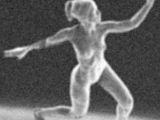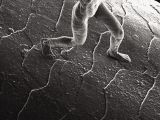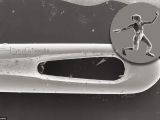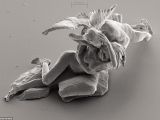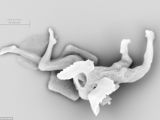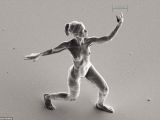“Nanosculpture” sounds like a really grand term, especially for something whose greatest asset is their very, very small size, but the word doesn't really do a perfect job of giving you an accurate feel for the scale. Unfortunately, instant destruction can do that a lot better.
We're not sure we'd like to know exactly how artist Jonty Hurwitz felt mere moments after finally laying eyes on what may very well have been his greatest works.
“Greatest” meaning most impressive and having nothing to do with size, since the sculptures he was reveling in were most definitely not large. Quite the opposite, they were half the width of a human hair.
Key word here being “were,” since the lifespan of the sculptures was cut short by a relatively innocent attempt by the man's colleague to see them from a different angle.
The nanosculptures and their story
Artist Jonty Hurwitz spent ten months designing the sculptures. There were seven of them, all made based on photos taken of such things as a woman and the statue of Cupid & Psyche.
He took inspiration from the 18th century sculpture “Psyche Revived by Cupid’s Kiss” by Antonia Canova (the god Eros holding a girl in an embrace).
He used around 250 cameras to gather all the photos he needed for the subjects of study, all arranged in a dome around the woman, sculpture, etc. Then he spend 10 months designing, sculpting and rendering virtual models, with the help of a high-powered program that reassembled the images into “digital clay.”
Finally, the models were ready to be 3D printed, which happened with the help of the Weizmann Institute of Technology. One technique did the 3D printing work, another handled the finer details.
To provide perspective, the tiny sculptures would have easily stood on the head of an ant while taking up barely any space. Hurwitz had to use a microscope strong enough to study cancer cells in order to actually see them clearly.
There were seven sculptures in total, but we have only two of them in the attached gallery. We can only assume the others perished before pictures of them could be taken.
How they met their noble end
Or ignoble, depending on your view. It was quite tragic actually, especially given the 10 months it took to make them. The artist set up the microscope and started to examine the dust-mote-sized objects, with a mirror behind the sculptures in order to see them clearly. Searching the mirror took 45 minutes all on its own in fact.
He and his roommate stared at them for minutes on end, but when said roommate tried to move the mirror (to see the sculptures from a different angle), the sculptures were crushed. A sad tale. We'd have liked to see a mirror+microscope installation in a museum exhibit, where visitors would take a peek at the little marvels.
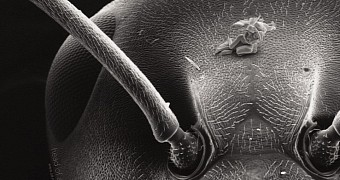
 14 DAY TRIAL //
14 DAY TRIAL // 
